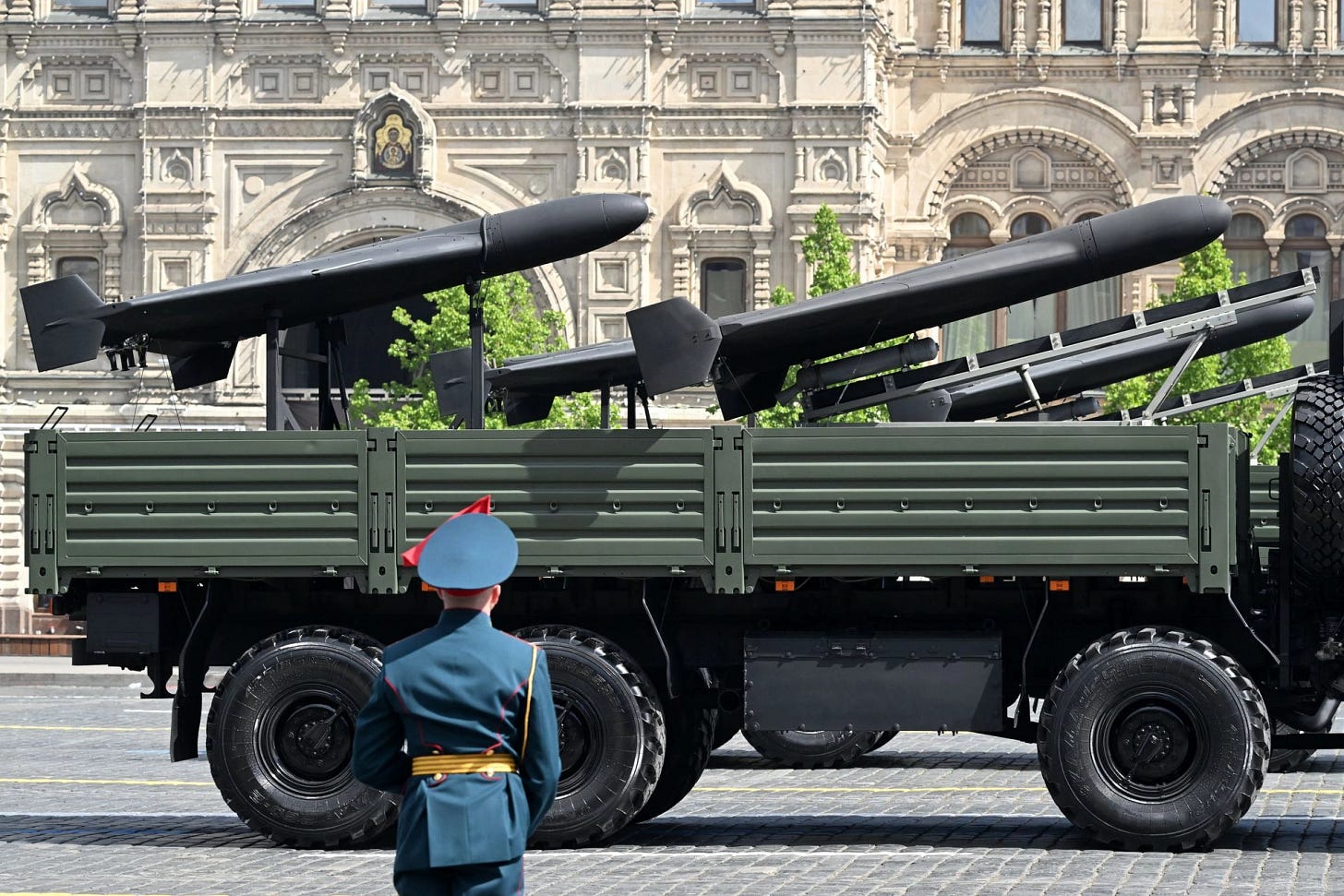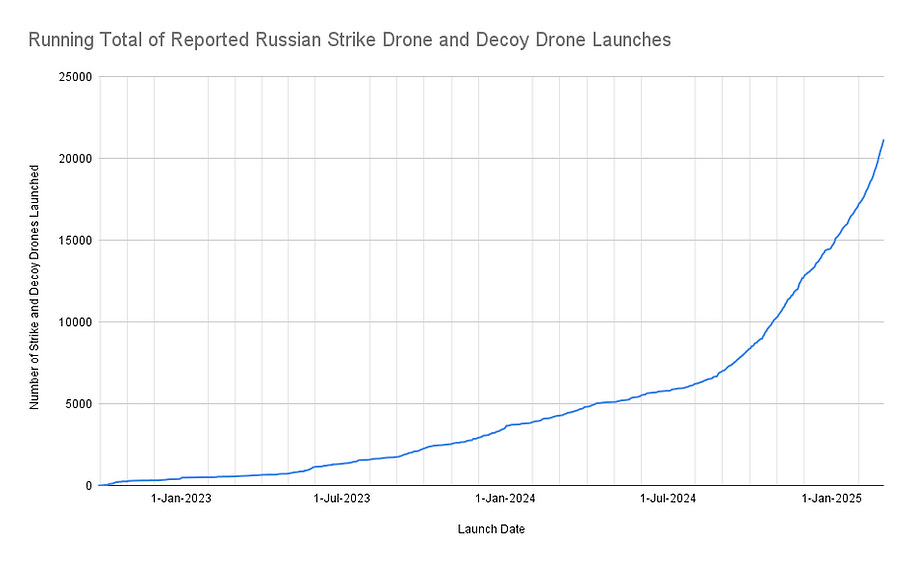New Video Offers View Inside Russia's Primary Shahed-136/Geran-2 Production Facility
🇷🇺 🇺🇦 With production capacity constantly expanding, Russia's strike drones are unlikely to go away anytime soon
Russian TV channel Zvezda has released a segment covering the production of Shahed-136/Geran-2 single-use propeller-driven strike drones in Alabuga, Tatarstan. Alabuga is home to the original production line for the Iranian Shahed-136 strike drone design in Russia. While Alabuga is understood to be home to the bulk of Russia’s long-range strike drone production capacity, there is a second parallel production line for the related Garpiya strike drone at a facility owned by IEMZ Kupol in Izhevsk, Udmurtia. Garpiya appears to be IEMZ Kupol’s internal designation for a reverse-engineered Shahed-136 built using Chinese-origin components—the Russian military also uses the Geran-2 designation for the Garpiya, albeit with a different production series code marked on the wing stabilizers. Although the original Iranian design has evolved considerably in Russia for various reasons, including efforts to reduce the cost and complexity of (mass) manufacture in wartime conditions, the Geran-2 specimens built in Alabuga remain similar to the original specimens that Russia received from the Iranian production line. The specimens built at the IEMZ Kupol facility in Izhevsk, however, not only make use of Chinese-origin components but are externally distinguished by the presence of bolt-on wing stabilizers, a subtle and fairly minor difference that is reflective of a different approach to simplifying the cost and complexity of the design for mass manufacture in wartime conditions.

For background on Russia’s employment of Shahed-136/Geran-2/Garpiya strike drones, consider reading my part one of a two-part series on the topic, which was published in March 2025:
🇷🇺 🇺🇦 Ukrainian Disclosures Offer Insight Into Scale of Russian Strike Drone and Decoy Decoy Launches, Projected Production—Part One
Note: This text is the second part of a SPAS Consulting analysis examining the scale of Russian strike drone and decoy drone launches and projected production. Part one focuses on the current composition of Russia's arsenal of strike drones and decoy drones. Part two focuses on the question of numbers.
The newly released video of the production facility at Alabuga corroborates satellite imagery showing a major expansion of production facilities at this site and Ukrainian reports of the ongoing expansion of production capacity. The video suggests that Alabuga may now be producing the fairly simple piston engine used on this strike drone design in-house, which amounts to a new development. It is notable that all of the observed specimens are the baseline variant of the Shahed-136/Geran-2, which lacks a nose-mounted sensor. Some of the specimens seen at an advanced stage of assembly feature a circular Controlled Reception Pattern Antenna (CRPA) Global Navigation Satellite System (GNSS) antenna. Russia has been using multiple GNSS designs on its Shahed-136/Geran-2/Garpiya strike drones in recent months, including new 12-element and 16-element designs, some of which are sourced from Chinese vendors.
The ongoing expansion of Shahed-136/Geran-2 production at Alabuga and the existence of a parallel production line for the Garpiya/Geran-2 at Izhevsk together indicate that Russia has likely committed to this Iranian-origin propeller-driven strike drone design for the foreseeable future, including in the aftermath of the Russia-Ukraine War and against targets other than Ukraine.


